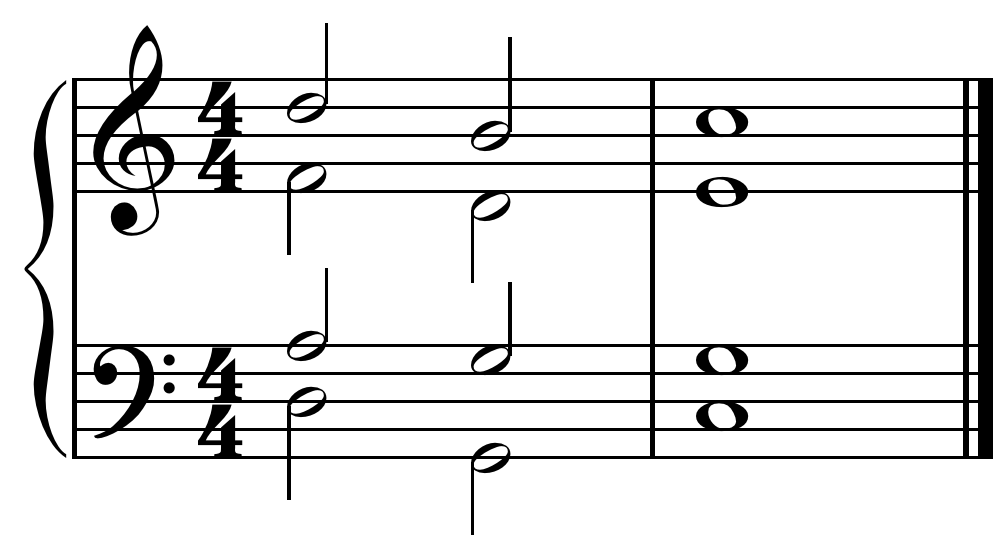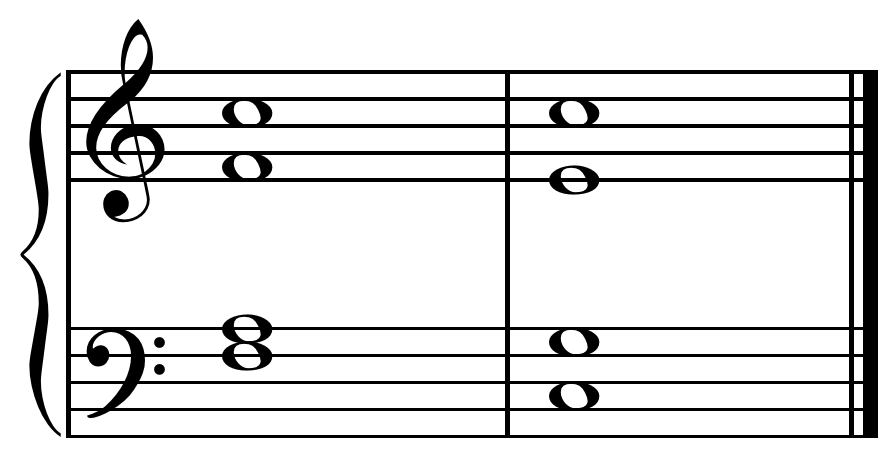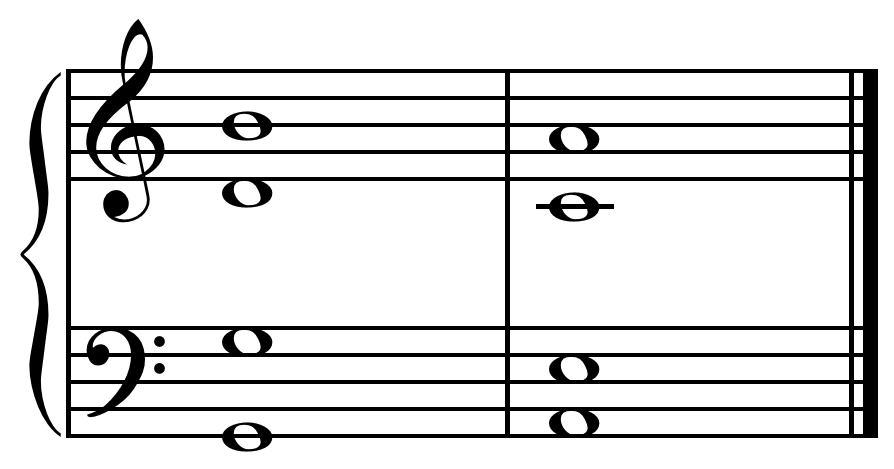+ Combine theory, improvisation, and jazzy hip-hop, and improve your piano chops with Grammy-winner Kiefer in Kiefer: Keys, Chords, & Beats.
Though it may seem daunting from afar, venturing into the world of music theory doesn’t require an IQ of 160 or even a teacher in a classroom. In fact, just a little familiarity with some key harmonic concepts can provide any composer, producer, or songwriter with the tools to create more emotionally impactful music. And one of the easiest, and most important concepts to understand is the cadence.
Simply put, a cadence is a melodic or chordal progression that ends a musical phrase. In the clearest use cases, cadences serve to impart a musical section or phrase with a sense of “resolution,” but they can be also used to create all kinds of sub-sentiments en route to finality. Learn all ab out cadences in Soundfly’s new video from our YouTube channel here.
Here are just a few of the most common cadential forms you’ll hear in music ranging from Beethoven to Britney Spears (although we’ve pretty much stuck to examples from the classical repertoire, since that’s where these terms are most used).
That said, they are a great tool for any musician to help finish the your musical sentences.
The Perfect Authentic Cadence

The most common cadence in all music, classical or otherwise, is the perfect authentic cadence. This is the most final sounding of all the cadences, and tends to be found at any closing point in a piece of music, whether at the end of a section or movement or even in the final notes of an entire piece. Going from the major V to the major I (or minor i) feels completely settled, a full stop at the end of a musical idea, and an arrival back home.
More specifically, the perfect authentic cadence is defined as a root position V chord resolving to a root position I chord with the soprano voice (the highest sounding voice in a harmony) ending on “Do,” also known as the tonic. An excellent example of this cadence is at the end of Bach’s Prelude in C Major from “The Well-Tempered Clavier.”
The Imperfect Authentic Cadence

Like the perfect authentic, the imperfect authentic cadence also resolves from the V chord to the I chord. However an imperfect authentic cadence violates at least one of the two other conditions of a perfect authentic cadence, those being that both chords be in root position and that the highest voice ends on the tonic. Violation of either of these two conditions, by using an inverted chord or by ending with the highest voice on a note other than the tonic, or “Do,” result in the cadence being considered imperfect.
Imperfect authentic cadences have a less settled sound than authentic cadences. Though they mark the end of a phrase, as all cadences do, they still have enough forward momentum so that the piece or theme can continue on from here — a partial resolution. Another example from Bach, ever the music theory exemplar, comes at about 1:22 in this version of his Orchestral Suite No. 3.
The Plagal Cadence

Known more colloquially as the “amen” cadence, a plagal cadence is weaker than an authentic cadence, but still sounds pretty final. It is known as the “amen” cadence because it is often found at the end of hymns and religious music. A plagal cadence moves from a IV chord to a I chord (or from iv to i in minor tonalities) and can include inversions.
Side note: Some people have defined plagal cadences as moving from a subdominant function to a tonic function without passing a dominant chord. In that case, you could also consider a ii chord to a I chord as a plagal cadence, but by far the most common way you’ll hear this term used is in describing IV to I.
Due to this cadence’s ability to reference finality without hitting the listener over the head with resolution like a perfect authentic cadence, some theorists have likened this cadence to a musical “comma.” An epic example of a plagal cadence comes at the end of Jean Sibelius’s Opus 26, “Finlandia.” It closes out the piece, which concludes in an instantly recognizable hymn.
The Half Cadence

A half cadence has a distinctly different feel from all of the preceding cadences. This is because most cadences end on a I chord, which is the fundamental chord of the key and contains no forward momentum; it is final and static. A half cadence, on the other hand, ends on a V chord. V chords typically have the most momentum of any chord, with a strong pull towards the tonic. Ending a cadence on a V chord feels like a temporary pause but not a stop, sort of like the feeling of finishing a breath in, but not following it with a release of tension in the form of a breath back out.
The only real requirement for half cadences is ending on a V chord so it allows for some variety in the first chord. The most popular examples in use today are probably I to V, ii to V, or IV to V. Because they leave you hanging, they are often used for turnarounds at the end of phrases in jazz or popular music.
Another prominent variant in the half cadence structure is the Phrygian half cadence, which proceeds to V from iv⁶, a four chord in a minor key played in first inversion. (Note: For jazz musicians, that little 6 indicates first inversion, NOT that it’s a chord with a sixth in it. See below for details.) The bass progression in a Phrygian half cadence moves from “Le” (♭ 6) to “Sol” (5), a half-step, which is reminiscent of the half-step from “Ra” (♭2) to “Do” (1) in the Phrygian mode.

Half cadences can be used as halfway points in phrases but do not generally conclude phrases. A prominent example is the beginning of the opening phrase to “Spring” from Vivaldi’s Four Seasons. In this recording, the cadence ends at about 13 seconds in.
The Deceptive Cadence

A deceptive cadence is a cadence where the V chord leads to any chord other than a I chord. It appears most commonly as a V to vi. The effect is one of surprise, giving the cadence a unique color and mysteriousness that the other cadences do not have. Another example might be V to IV or V to ♭VI in a minor key.
A prominent example of a deceptive cadence comes from Chopin’s Prelude in E minor (Op. 28 No. 4) when the V chord goes to a vi instead of I.
Okay, So What Is a Cadenza?
The cadence is not to be confused with its almost homophonic cousin the cadenza, a free-flowing ending section written for a soloist in a piece of music. These solos often draw out a cadence by occurring over either the penultimate or final chord of a section or piece, thus the verbal similarity (cadenza literally translates to “cadence” in Italian). As such, they often, but certainly not always, appear in a coda or near the end of a piece.
You’ll hear a cadenza when an orchestra or band holds one of the final chords at the end of a piece for an indeterminate amount of time, as a soloist or vocalist is allowed the spotlight to freely improvise and showcase their virtuosity, before finally resolving all together. In other words, cadenzas sell tickets.
Prominent examples include the oboe cadenza in Beethoven’s Fifth Symphony (about 4:15 in this version) and the cello cadenza that opens Brahms’ “Double Concerto” for violin and cello (about 0:11 in the below version):
Play Your Heart Out!
Continue your learning adventure on Soundfly with modern, creative courses on songwriting, mixing, production, composing, synths, beats, and more by artists like Kiefer, Kimbra, Com Truise, Jlin, Ryan Lott, RJD2, and our newly launched Elijah Fox: Impressionist Piano & Production.



